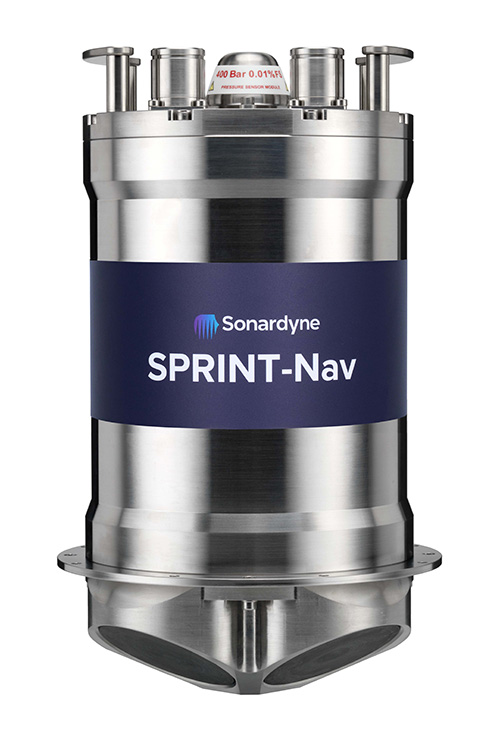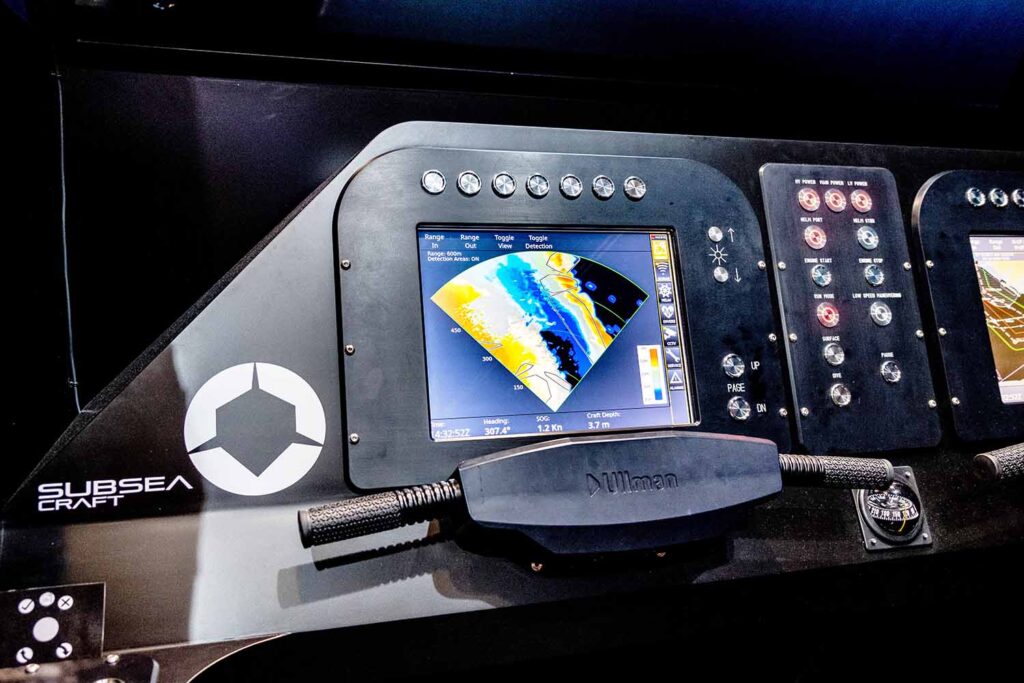Navigating the surface to subsea battle space
Navigating the surface to subsea battle space
When UK-based technology SME SubSea Craft needed a reliable navigation system for a ground-breaking surface to subsea maritime delivery platform there was only one possible solution…
SubSea Craft deliver next-generation capability solutions to support maritime manoeuvres. With extensive defence and commercial experience across a range of sectors, they bring together best-in-class partners from the maritime, technology, and defence sectors to deliver a technical edge to their clients.
VICTA is the first in a series of multi-domain platforms which will enable users to conduct a range of discrete military operations. It is capable of a high-speed surface transit before rapidly switching to a subsurface mode for covert delivery of divers and/or equipment.
The platform is deployable as an individual asset or as a force multiplier, capable of enhancing maritime operations through networked, crewed, or autonomous modes.
When developing VICTA, their next-generation maritime delivery platform in 2019 they identified the need for a navigation system and a forward-looking sonar to assist navigation in congested and poorly charted areas of operations, and as an additional intelligence, surveillance and reconnaissance (ISR) effect to support specific mission requirements. Both technologies had to be able to withstand the shock and vibration of high-speed surface transit and the pressure associated with transition from surface to subsea modes.
The components also needed to be compact enough to be fitted and operate within a limited space while delivering reliable, mission-critical, navigation information to the pilot in an easy to digest format so operators can maintain focus on mission critical activity.
With decades of experience in both maritime technology and complex integration behind them, this was a challenge that Covelya Group companies Forcys, Sonardyne and Wavefront combined forces to meet.
The solution
Combining tightly coupled solutions from Forcys technology partners to create a fully integrated navigation and forward-looking sonar system delivers best in class capability to the VICTA platform.

SPRINT-Nav 300 from our technology partner Sonardyne met VICTA’s stringent navigational accuracy requirements. It combines Sonardyne’s proven SPRINT INS (Inertial Navigation System), Syrinx DVL (Doppler Velocity Log) and a high accuracy intelligent pressure sensor in a single housing, making it one of the smallest combined inertial navigation instruments on the market.
Because it is designed for both surface and subsea navigation, it can withstand the associated pressure changes as VICTA switches modes. It also saves vital mission time as it requires no gyro calibration manoeuvres on start-up. Its compact size means that it minimises the impact on the limited space available.
VICTA is also fitted with a Vigilant FLS 1500 – a long-range, Forward-Looking Sonar from our technology partner Wavefront Systems. Vigilant is a real-time navigation and obstacle avoidance sonar, able to detect objects in the water column at up to 1.5 km away while generating a high resolution, easy to interpret 3D terrain map of the seabed and water column ahead – out to 600 m.

Vigilant FLS can be integrated into autonomous platforms to provide essential information to command-and-control systems to aid safe surface and subsurface navigation. The inclusion of Vigilant FLS provides safety and mission success benefits when used on both manned and autonomous operations.
David Henson Chief Technical Officer for SubSea Craft said: “At SSC our ethos is to maximise the use of cutting-edge technology to drive innovation and deliver battle winning capability. We have been very impressed with how successfully Forcys and its technology partners have been able to work together and seamlessly integrate with our existing systems to deliver an excellent solution.”
The results
Despite the complexities of working on a highly complex unfamiliar platform, we were able to call on many years of experience and knowledge to ensure successful integration of SPRINT-Nav and Vigilant FLS onboard VICTA.
With many other complex and safety-to-life critical systems onboard, it was vital that all the technology was integrated without interference and leaving the complex layers of systems able to communicate with each other. Again, success here lay in our experience and ability to adjust our products to exquisite use cases, which are becoming more prevalent in the defence sector.
Justin Hains, Forcys Business Development Manager, commented; “SubSea Craft’s progressive application of technology presents a world of opportunities for future operations, and we are delighted to work with them. The breadth of experience within our technology partners in Covelya Group means that we are well placed to provide the technology required for VICTA to achieve its operational potential.”
Sea trials for VICTA are continuing successfully as SubSea Craft develop the platform to meet the demands of increasingly autonomous defence operations.
If you have similar navigational requirements, please get in touch.
More from The Watch
Indo Pacific 2025
The region’s premier commercial maritime and naval defence exposition, connecting Australian and international defence, industry, government, academia and technology leaders, in the national interest.

Share On